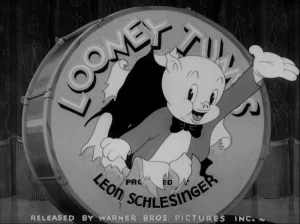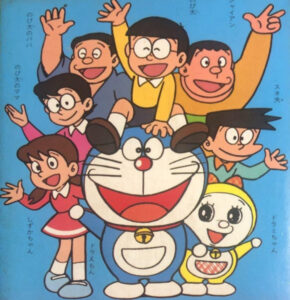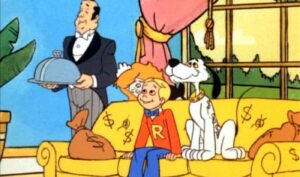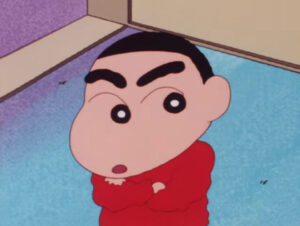I try to build a full personality for each of our cartoon characters to make them – personalities.
– Walt Disney
Cartoons have left an indelible mark on our collective imagination, evolving and captivating audiences over the course of several decades. From the hand-drawn classics of the early 20th century to the cutting-edge computer-generated marvels of today, cartoons have delighted viewers of all ages with their whimsical characters, imaginative worlds, and timeless stories. This article takes a nostalgic journey through the decades, exploring the iconic cartoons that have shaped generations and the ever-changing techniques that have brought them to life. Join us as we celebrate the evolution of cartoons, tracing their colourful trajectory from their humble beginnings to their status as beloved cultural icons.
 As cartoons have progressed through the decades, they have not only entertained but also reflected the societal and cultural shifts of their respective eras. From the slapstick humour of the early years to the sophisticated narratives of today, cartoons have adapted to changing tastes and pushed the boundaries of creativity, making an enduring impact on popular culture.
As cartoons have progressed through the decades, they have not only entertained but also reflected the societal and cultural shifts of their respective eras. From the slapstick humour of the early years to the sophisticated narratives of today, cartoons have adapted to changing tastes and pushed the boundaries of creativity, making an enduring impact on popular culture.
Steamboat Wille – First Mickey Mouse Cartoon (1928):
 Mickey Mouse, the iconic character created by Walt Disney and Ub Iwerks, has become a symbol of animation and pop culture. Debuting in 1928’s “Steamboat Willie,” Mickey quickly captured the hearts of audiences worldwide with his cheerful personality, distinctive voice, and trademark red shorts. Throughout the years, Mickey has starred in numerous animated shorts, feature films, and television shows, showcasing his mischievous yet endearing nature. He embodies the values of optimism, friendship, and perseverance, making him a beloved and timeless character. From his humble beginnings as a mischievous rodent on a steamboat to his status as the official mascot of The Walt Disney Company, Mickey Mouse’s influence on animation and entertainment is immeasurable.
Mickey Mouse, the iconic character created by Walt Disney and Ub Iwerks, has become a symbol of animation and pop culture. Debuting in 1928’s “Steamboat Willie,” Mickey quickly captured the hearts of audiences worldwide with his cheerful personality, distinctive voice, and trademark red shorts. Throughout the years, Mickey has starred in numerous animated shorts, feature films, and television shows, showcasing his mischievous yet endearing nature. He embodies the values of optimism, friendship, and perseverance, making him a beloved and timeless character. From his humble beginnings as a mischievous rodent on a steamboat to his status as the official mascot of The Walt Disney Company, Mickey Mouse’s influence on animation and entertainment is immeasurable.
Looney Toons (1930):
 Looney Tunes, the legendary animated franchise created by Warner Bros., has left an indelible mark on the world of cartoons. Introduced in the 1930s, Looney Tunes features a dynamic cast of characters, including Bugs Bunny, Daffy Duck, Porky Pig, and Tweety Bird, known for their witty humour and zany antics. These iconic characters have entertained audiences for decades through a vast array of animated shorts and television series. Looney Tunes epitomizes slapstick comedy, clever wordplay, and visual gags, combining fast-paced action with memorable catchphrases. Its timeless appeal lies in its ability to entertain both children and adults, making Looney Tunes an enduring pillar of animation history.
Looney Tunes, the legendary animated franchise created by Warner Bros., has left an indelible mark on the world of cartoons. Introduced in the 1930s, Looney Tunes features a dynamic cast of characters, including Bugs Bunny, Daffy Duck, Porky Pig, and Tweety Bird, known for their witty humour and zany antics. These iconic characters have entertained audiences for decades through a vast array of animated shorts and television series. Looney Tunes epitomizes slapstick comedy, clever wordplay, and visual gags, combining fast-paced action with memorable catchphrases. Its timeless appeal lies in its ability to entertain both children and adults, making Looney Tunes an enduring pillar of animation history.
Popeye the Sailor (1933):
 Popeye the Sailor, the spinach-loving, muscle-bound animated character, has become an enduring icon in the world of cartoons. Created by Elzie Crisler Segar in 1929, Popeye made his first appearance in comic strips before transitioning to animated shorts and later a popular TV series. Popeye’s unique charm lies in his distinctive voice, squinty eye, and signature pipe. With his superhuman strength gained from consuming spinach, Popeye battles villains like Bluto to win the heart of his beloved Olive Oyl. Through his adventures, Popeye embodies determination, resilience, and a strong moral compass, making him a beloved and timeless figure in animation history.
Popeye the Sailor, the spinach-loving, muscle-bound animated character, has become an enduring icon in the world of cartoons. Created by Elzie Crisler Segar in 1929, Popeye made his first appearance in comic strips before transitioning to animated shorts and later a popular TV series. Popeye’s unique charm lies in his distinctive voice, squinty eye, and signature pipe. With his superhuman strength gained from consuming spinach, Popeye battles villains like Bluto to win the heart of his beloved Olive Oyl. Through his adventures, Popeye embodies determination, resilience, and a strong moral compass, making him a beloved and timeless figure in animation history.
Tom & Jerry (1940):
 Tom and Jerry, the mischievous cat and clever mouse duo, have captivated audiences with their timeless antics. Created by William Hanna and Joseph Barbera in 1940, this animated franchise has become one of the most beloved and enduring in cartoon history. Tom, the scheming cat, and Jerry, the quick-witted mouse, engage in an endless battle of wits and slapstick humour, resulting in hilarious chases and creative pranks. The absence of dialogue, coupled with the expressive animation and memorable sound effects, adds to the comedic charm of the series. Tom and Jerry’s timeless appeal lies in their ability to evoke laughter and entertain across generations, making them one of the most iconic and beloved duos in animation.
Tom and Jerry, the mischievous cat and clever mouse duo, have captivated audiences with their timeless antics. Created by William Hanna and Joseph Barbera in 1940, this animated franchise has become one of the most beloved and enduring in cartoon history. Tom, the scheming cat, and Jerry, the quick-witted mouse, engage in an endless battle of wits and slapstick humour, resulting in hilarious chases and creative pranks. The absence of dialogue, coupled with the expressive animation and memorable sound effects, adds to the comedic charm of the series. Tom and Jerry’s timeless appeal lies in their ability to evoke laughter and entertain across generations, making them one of the most iconic and beloved duos in animation.
Scooby-Doo, Where Are You! (1969):
 “Scooby-Doo, Where Are You!” is a beloved animated series that first premiered in 1969 and has since become an enduring classic. The show follows the adventures of a group of friends, Fred, Daphne, Velma, Shaggy, and their talking Great Dane, Scooby-Doo, as they solve mysteries involving ghosts, monsters, and supernatural phenomena. Combining comedy, suspense, and a touch of the supernatural, the series became known for its catchy theme song, memorable catchphrases, and engaging mysteries. Scooby-Doo’s enduring popularity lies in its endearing characters, humorous dialogue, and the underlying message that things are not always as they seem. It has spawned numerous spin-offs, films, and adaptations, solidifying its place as an iconic and beloved part of animation history.
“Scooby-Doo, Where Are You!” is a beloved animated series that first premiered in 1969 and has since become an enduring classic. The show follows the adventures of a group of friends, Fred, Daphne, Velma, Shaggy, and their talking Great Dane, Scooby-Doo, as they solve mysteries involving ghosts, monsters, and supernatural phenomena. Combining comedy, suspense, and a touch of the supernatural, the series became known for its catchy theme song, memorable catchphrases, and engaging mysteries. Scooby-Doo’s enduring popularity lies in its endearing characters, humorous dialogue, and the underlying message that things are not always as they seem. It has spawned numerous spin-offs, films, and adaptations, solidifying its place as an iconic and beloved part of animation history.
Sesame Street (1969):
 “Sesame Street” is a groundbreaking educational children’s television series that premiered in 1969. Created by Joan Ganz Cooney and Lloyd Morrisett, the show revolutionized children’s programming by combining entertainment and learning. Set in a vibrant urban neighbourhood, “Sesame Street” features a diverse cast of beloved characters like Big Bird, Elmo, Cookie Monster, and Oscar the Grouch. Through captivating skits, catchy songs, and puppetry, the show covers a wide range of educational topics, including literacy, math, social skills, and cultural diversity. With its engaging content and commitment to inclusivity, “Sesame Street” has become a global phenomenon, positively impacting generations of children and promoting the importance of early childhood education.
“Sesame Street” is a groundbreaking educational children’s television series that premiered in 1969. Created by Joan Ganz Cooney and Lloyd Morrisett, the show revolutionized children’s programming by combining entertainment and learning. Set in a vibrant urban neighbourhood, “Sesame Street” features a diverse cast of beloved characters like Big Bird, Elmo, Cookie Monster, and Oscar the Grouch. Through captivating skits, catchy songs, and puppetry, the show covers a wide range of educational topics, including literacy, math, social skills, and cultural diversity. With its engaging content and commitment to inclusivity, “Sesame Street” has become a global phenomenon, positively impacting generations of children and promoting the importance of early childhood education.
Doremon (1979):
 “Doraemon” is a beloved Japanese manga and anime series created by Fujiko F. Fujio. The story revolves around a robotic cat named Doraemon, who is sent from the future to help a young boy named Nobita Nobi. Doraemon brings with him a variety of futuristic gadgets and devices, aiding Nobita in his everyday life and adventures. The series combines humour, heartwarming moments, and moral lessons, exploring themes of friendship, perseverance, and the value of hard work. With its endearing characters, imaginative storytelling, and a perfect blend of comedy and emotion, “Doraemon” has captured the hearts of audiences of all ages, making it one of the most beloved and enduring franchises in anime history.
“Doraemon” is a beloved Japanese manga and anime series created by Fujiko F. Fujio. The story revolves around a robotic cat named Doraemon, who is sent from the future to help a young boy named Nobita Nobi. Doraemon brings with him a variety of futuristic gadgets and devices, aiding Nobita in his everyday life and adventures. The series combines humour, heartwarming moments, and moral lessons, exploring themes of friendship, perseverance, and the value of hard work. With its endearing characters, imaginative storytelling, and a perfect blend of comedy and emotion, “Doraemon” has captured the hearts of audiences of all ages, making it one of the most beloved and enduring franchises in anime history.
Richie Rich (1980):
 “Richie Rich” is an animated television series based on the iconic comic book character created by Alfred Harvey and Warren Kremer. The show follows the adventures of the wealthiest kid in the world, Richie Rich, who lives in a mansion filled with extravagant luxuries. Richie, along with his loyal friends and loyal butler, seeks fun and excitement while navigating the challenges of being fabulously rich. The series combines elements of comedy, adventure, and mystery as Richie and his friends embark on thrilling escapades, solving puzzles, and outsmarting villains. With its themes of friendship, family, and the balance between wealth and values, “Richie Rich” provides wholesome entertainment for young viewers while sparking their imagination and imagination.
“Richie Rich” is an animated television series based on the iconic comic book character created by Alfred Harvey and Warren Kremer. The show follows the adventures of the wealthiest kid in the world, Richie Rich, who lives in a mansion filled with extravagant luxuries. Richie, along with his loyal friends and loyal butler, seeks fun and excitement while navigating the challenges of being fabulously rich. The series combines elements of comedy, adventure, and mystery as Richie and his friends embark on thrilling escapades, solving puzzles, and outsmarting villains. With its themes of friendship, family, and the balance between wealth and values, “Richie Rich” provides wholesome entertainment for young viewers while sparking their imagination and imagination.
Shinchan (1992):
 “Shin-chan,” also known as “Crayon Shin-chan,” is a Japanese manga and anime series created by Yoshito Usui. The series follows the mischievous adventures of Shinnosuke “Shin-chan” Nohara, a kindergarten-aged boy with a unique and often outrageous perspective on life. Known for its irreverent humour, bold and satirical social commentary, and distinctive art style, Shin-chan has become a cultural phenomenon. The show blends slice-of-life scenarios with exaggerated comedic moments, tackling various themes such as family, friendship, and societal norms. With its lighthearted yet thought-provoking content, Shin-chan has captured the hearts of audiences around the world, leaving a lasting impact on the world of comedy anime.
“Shin-chan,” also known as “Crayon Shin-chan,” is a Japanese manga and anime series created by Yoshito Usui. The series follows the mischievous adventures of Shinnosuke “Shin-chan” Nohara, a kindergarten-aged boy with a unique and often outrageous perspective on life. Known for its irreverent humour, bold and satirical social commentary, and distinctive art style, Shin-chan has become a cultural phenomenon. The show blends slice-of-life scenarios with exaggerated comedic moments, tackling various themes such as family, friendship, and societal norms. With its lighthearted yet thought-provoking content, Shin-chan has captured the hearts of audiences around the world, leaving a lasting impact on the world of comedy anime.
Pokemon (1997):
 “Pokémon” is a multi-media franchise that originated in 1996 as a video game created by Satoshi Tajiri and Ken Sugimori. It quickly expanded into an animated television series, trading card games, movies, merchandise, and more. The franchise revolves around fictional creatures called Pokémon, which humans, known as Pokémon Trainers, catch and train to battle each other. The TV series follows the adventures of Ash Ketchum, the aspiring Pokémon Trainer, and his loyal Pikachu. With its captivating storytelling, memorable characters like Pikachu and Team Rocket, and themes of friendship, perseverance, and the power of teamwork, Pokémon has become a cultural phenomenon, entertaining and inspiring fans of all ages worldwide.
“Pokémon” is a multi-media franchise that originated in 1996 as a video game created by Satoshi Tajiri and Ken Sugimori. It quickly expanded into an animated television series, trading card games, movies, merchandise, and more. The franchise revolves around fictional creatures called Pokémon, which humans, known as Pokémon Trainers, catch and train to battle each other. The TV series follows the adventures of Ash Ketchum, the aspiring Pokémon Trainer, and his loyal Pikachu. With its captivating storytelling, memorable characters like Pikachu and Team Rocket, and themes of friendship, perseverance, and the power of teamwork, Pokémon has become a cultural phenomenon, entertaining and inspiring fans of all ages worldwide.
SpongeBob SquarePants (1999):
 “SpongeBob SquarePants” is an immensely popular animated television series that premiered in 1999. Created by Stephen Hillenburg, the show follows the whimsical adventures of SpongeBob, a cheerful and optimistic sea sponge who lives in the underwater town of Bikini Bottom. SpongeBob works as a fry cook at the Krusty Krab, alongside his best friend Patrick Star. With its unique humour, colourful animation, and memorable characters like Squidward Tentacles and the villainous Plankton, the show has captivated audiences of all ages. Known for its witty dialogue, catchy songs, and lovable characters, “SpongeBob SquarePants” has become an iconic part of pop culture, spreading laughter and joy for over two decades.
“SpongeBob SquarePants” is an immensely popular animated television series that premiered in 1999. Created by Stephen Hillenburg, the show follows the whimsical adventures of SpongeBob, a cheerful and optimistic sea sponge who lives in the underwater town of Bikini Bottom. SpongeBob works as a fry cook at the Krusty Krab, alongside his best friend Patrick Star. With its unique humour, colourful animation, and memorable characters like Squidward Tentacles and the villainous Plankton, the show has captivated audiences of all ages. Known for its witty dialogue, catchy songs, and lovable characters, “SpongeBob SquarePants” has become an iconic part of pop culture, spreading laughter and joy for over two decades.
Mr. Bean (2002):
 The “Mr. Bean” animated series is based on the beloved character portrayed by Rowan Atkinson in live-action. The animated show first premiered on January 5, 2002. It follows the comical and often clumsy misadventures of Mr. Bean as he navigates everyday situations, often with hilarious consequences. Through minimal dialogue and physical comedy, the series captures the essence of the original character, showcasing his eccentric behaviour and unique problem-solving skills. Each episode features a series of comedic sketches, highlighting Mr. Bean’s interactions with the world around him. The “Mr. Bean” cartoon captures the timeless appeal of the character, entertaining audiences of all ages with its slapstick humour and universal charm.
The “Mr. Bean” animated series is based on the beloved character portrayed by Rowan Atkinson in live-action. The animated show first premiered on January 5, 2002. It follows the comical and often clumsy misadventures of Mr. Bean as he navigates everyday situations, often with hilarious consequences. Through minimal dialogue and physical comedy, the series captures the essence of the original character, showcasing his eccentric behaviour and unique problem-solving skills. Each episode features a series of comedic sketches, highlighting Mr. Bean’s interactions with the world around him. The “Mr. Bean” cartoon captures the timeless appeal of the character, entertaining audiences of all ages with its slapstick humour and universal charm.
Ben 10 (2005):
 “Ben 10” is an animated television series that first premiered on December 27, 2005. Created by Man of Action Studios and produced by Cartoon Network Studios, the show follows the adventures of Ben Tennyson, a young boy who discovers a powerful alien device called the Omnitrix. The Omnitrix allows Ben to transform into various alien creatures, each with their unique abilities. As Ben battles villains and protects the world, he learns valuable lessons about responsibility, teamwork, and the importance of doing what’s right. “Ben 10” has become a popular franchise, spawning multiple sequels, spin-offs, films, and merchandise, captivating audiences with its action-packed storytelling and imaginative alien world.
“Ben 10” is an animated television series that first premiered on December 27, 2005. Created by Man of Action Studios and produced by Cartoon Network Studios, the show follows the adventures of Ben Tennyson, a young boy who discovers a powerful alien device called the Omnitrix. The Omnitrix allows Ben to transform into various alien creatures, each with their unique abilities. As Ben battles villains and protects the world, he learns valuable lessons about responsibility, teamwork, and the importance of doing what’s right. “Ben 10” has become a popular franchise, spawning multiple sequels, spin-offs, films, and merchandise, captivating audiences with its action-packed storytelling and imaginative alien world.
Phineas and Ferb (2007):
 “Phineas and Ferb” is an animated comedy-musical series that first premiered on August 17, 2007. Created by Dan Povenmire and Jeff “Swampy” Marsh, the show follows the stepbrothers Phineas Flynn and Ferb Fletcher as they embark on inventive and imaginative projects during their summer vacation. Alongside their friends, including Candace, their sister, and Perry the Platypus, their pet, who is also a secret agent, the duo creates outlandish inventions and adventures, much to the annoyance of their sister. With its catchy songs, witty humour, and heartwarming themes of friendship and family, “Phineas and Ferb” has gained a devoted fan base and remains a beloved animated series.
“Phineas and Ferb” is an animated comedy-musical series that first premiered on August 17, 2007. Created by Dan Povenmire and Jeff “Swampy” Marsh, the show follows the stepbrothers Phineas Flynn and Ferb Fletcher as they embark on inventive and imaginative projects during their summer vacation. Alongside their friends, including Candace, their sister, and Perry the Platypus, their pet, who is also a secret agent, the duo creates outlandish inventions and adventures, much to the annoyance of their sister. With its catchy songs, witty humour, and heartwarming themes of friendship and family, “Phineas and Ferb” has gained a devoted fan base and remains a beloved animated series.
Over the decades, cartoons have transcended their initial purpose of simple entertainment, becoming a powerful medium for storytelling, cultural expression, and social commentary. From the early hand-drawn classics to the modern-day computer-generated wonders, cartoons have evolved and adapted to captivate audiences of all ages. They have shaped our childhoods, influenced popular culture, and left a lasting impact on society. As technology advances and new animation techniques emerge, the future of cartoons holds endless possibilities. However, no matter the era, cartoons will continue to enchant us, inspire us, and remind us of the boundless imagination that resides within us all.


